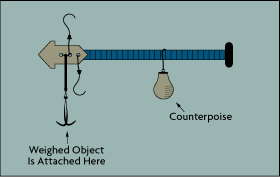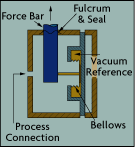|
|
 |

The existence of life itself has been attributed over the ages to an underlying "force." Life is manifested by change and movement--it involves actions and interactions of a variety of forces. Therefore, no measurement is more fundamental to human activity than the measurement of force in its many manifestations, including weight, pressure, acceleration, torque, work, and energy.
The purpose of this first chapter is to trace the historical evolution of the understanding of force and of the theories which evolved at various stages of human development. While the ancient civilizations of 8,000 to 6,000 B.C., in the river valleys of Southwest Asia, Mesopotamia or Egypt and others in China, India, and South America, all used lever and roller systems to amplify the muscle power of men, the first attempts to formalize a theoretical understanding of force were in ancient Greece.
From Aristotle to Hawking
The ancient Greek philosophers considered themselves qualified to make pronouncements in the field of science, but their views had little to do with the real world. Aristotle (384-322 B.C.), for example, believed that "form" caused matter to move. He defined motion as the process by which the "potentiality" of matter became the "actuality" of form. With that view of reality, it is no wonder that the Greeks of Aristotle's time created much more art than technology.
Yet, a hundred years later, the Greek physicist Archimedes (287-212 B.C.) became a pioneer of real engineering experimentation. He not only discovered the force-amplifying capability of the pulley, but also noted that the same weight of gold will displace less water than does an equal weight of silver.
Some 400 years later, the astronomer Clausius Ptolemaeus (second century A.D.) developed the first model of planetary movements. He assumed the Earth as being stationary in the center of the universe, with the Sun, Moon and stars revolving around it in circular orbits. The first revision of the Ptolemaic system came a millennium later; Nicholas Copernicus (1473-1543) replaced the Earth with the Sun as the center of the universe (a heliocentric system). Because he still did not understand the role of the force of gravity, however, he, too, assumed that the planets traveled in perfect circles.
 |
| Figure 1-1: Steelyard for Weight Comparison |
Another century passed before Galileo Galilei (1564-1642) discovered, by dropping various items from the Leaning Tower of Pisa, that the velocity of a falling object is independent of its weight. His attitude was that of a good engineer: "I don't know why, but it works, so don't forget it!"
Johannes Kepler (1571-1630), who correctly established that the orbits of the planets about the Sun are elliptical, did not realize the cause of all this: the force of gravity. He noted that the Sun had some "mysterious power or virtue" which compelled the planets to hold to their orbits. The role of gravity escaped even Blaise Pascal (1623-1662), although he did correctly explain some related phenomena such as pressure and barometric pressure. It was also Pascal who first noted that, when pressure is applied to a confined fluid, the pressure is transmitted undiminished in all directions. It is for these discoveries that we honor him by using his name (in the SI system) as the unit of pressure.
The role of the force of gravity was first fully understood by Sir Isaac Newton (1642-1727). His law of universal gravitation explained both the fall of bodies on Earth and the motion of heavenly bodies. He proved that gravitational attraction exists between any two material objects. He also noted that this force is directly proportional to the product of the masses of the objects and inversely proportional to the square of the distance between them. On the Earth's surface, the measure of the force of gravity on a given body is its weight. The strength of the Earth's gravitational field (g) varies from 9.832 m/sec2 at sea level at the poles to 9.78 m/sec2 at sea level at the Equator.
 |
Figure 1-2: Vacuum
Reference Gauge |
Newton summed up his understanding of motion in three laws:
1) The law of inertia: A body displays an inherent resistance to changing its speed or direction. Both a body at rest and a body in motion tend to remain so.
2) The law of acceleration: Mass (m) is a numerical measure of inertia. The acceleration (a) resulting from a force (F) acting on a mass can be expressed in the equation a = F/m; therefore, it can be seen that the greater the mass (inertia) of a body, the less acceleration will result from the application of the same amount of force upon it.
3) For every action, there is an equal and opposite reaction.
After Newton, progress in understanding force-related phenomena slowed. James Prescott Joule (1818-1889) determined the relationship between heat and the various mechanical forms of energy. He also established that energy cannot be lost, only transformed (the principle of conservation of energy), defined potential energy (the capacity for doing work), and established that work performed (energy expended) is the product of the amount of force applied and the distance traveled. In recognition of his contributions, the unit of work and energy in the SI system is called the joule.
Albert Einstein (1879-1955) contributed another quantum jump in our understanding of force-related phenomena. He established the speed of light (c = 186,000 miles/sec) as the maximum theoretical speed that any object with mass can travel, and that mass (m) and energy (e) are equivalent and interchangeable: e = mc2.
Einstein's theory of relativity corrected the discrepancies in Newton's theory and explained them geometrically: concentrations of matter cause a curvature in the space-time continuum, resulting in "gravity waves." While making enormous contributions to the advancement of science, the goal of developing a unified field theory (a single set of laws that explain gravitation, electromagnetism, and subatomic phenomena) eluded Einstein.
Edwin Powell Hubble (1889-1953) improved our understanding of the universe, noting that it looks the same from all positions, and in all directions, and that distances between galaxies are continuously increasing. According to Hubble, this expansion of the universe started 10 to 20 billion years ago with a "big bang," and the space-time fabric which our universe occupies continues to expand.
Carlo Rubbia (1934- ) and Simon van der Meer (1925- ) further advanced our understanding of force by discovering the subatomic W and Z particles which convey the "weak force" of atomic decay. Stephen Hawking (1952- ) advanced our understanding even further with his theory of strings. Strings can be thought of as tiny vibrating loops from which both matter and energy derive. His theory holds the promise of unifying Einstein's theory of relativity, which explains gravity and the forces acting in the macro world, with quantum theory, which describes the forces acting on the atomic and subatomic levels.
|

